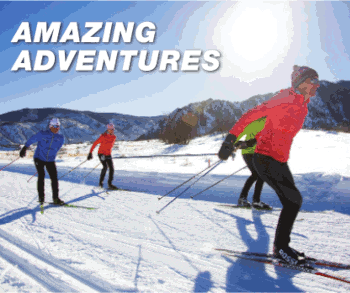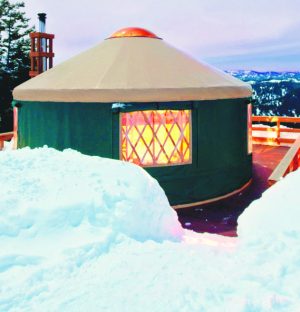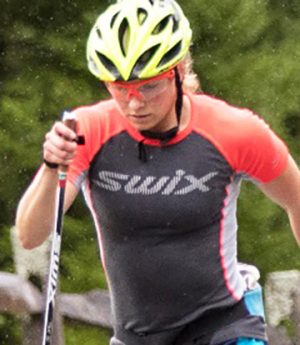December 06, 2012 (West Yellowstone, MO) – Riding in Drew Barney’s ’02 white pickup, we led a convoy of 20+ SUV’s and Suby’s up to the plateau where primo grooming and organized parking chaos awaited. Just 1200′ above town, the snow comes earlier and lasts longer. There had been snow in town, and then r_ _ _, yes, the four-letter word for non-solid precip. But the camp and the races must go on. Now in its 25th year, the Fall Training Camp at the Yellowstone Ski Festival is happening like never before, even in a lean year like this one. I caught a ride with Drew on our way up to the plateau for the clinics one day, and had a chance to ask him about the camp’s and his storied past.
First, Drew, how did you get into cross country, and how did the camps start?
Drew Barney: I grew up in Ogden (Utah) and worked in a ski shop. It was owned by Bob Chambers, who’d been an NCAA champ. I came in one day, and he had two brand new pairs of race skis. Bob said to “mount ’em up.” “Who for?” I said. “You and me are going racing tomorrow!” [replied Bob.]
The Camp started 1979, when the US Ski Team came to West under the direction of Marty Hall. I was a participant in the ’80 camp. In 1987 when a USSA sponsored coaches’ clinic lost funding, Dick Hunt and I saw an opportunity, and put together a training camp for athletes and coaches.
I used to do pretty well in the races, but it’s hard to stay in a position to be in the top three. I may race again after I get my hip replaced.
Drew walks with a slight limp now, but thinks he’ll be back in the game after some new hardware.
What changes have you witnessed over the life of the camp?
DB: We are faster at getting people to ski well. We have a better understanding of the importance of the link between Skate and Classic, and how you ‘can’t cheat’ with the weight shift in classic. In classic teaching we’re better at showing statically exactly what is going on with technique.
What drove the changes?
DB: The pressure is on. Other camps have turned up the volume. We’re always evolving. Coaches share their secrets with each other and with the participants. I’ve got the utmost confidence in the staff. They all bring different perspectives that all lead to better technique.
What sets the West Yellowstone Camp apart?
DB: The campers ski with 6 or 10 coaches over 3 to 5 days. Today (last day of the 3 and the 5 day camp) is the biggest learning day. People are putting all their learning together, and having breakthroughs. Even if their best coaching session was a day or two ago, people are synthesizing, and will look back on today’s session as ‘the best.’ Post event surveys bear that out. People are synthesizing all they’ve learned. For a lot of people who’ve been coming here for years, Thanksgiving in West Yellowstone, has become a given. For many, this is where you ‘do’ Thanksgiving.
Can you tell us a little more about the trail system?
DB: We’ve put a lot of money into the trails, getting them mowed so that we can start up with 6″ of snow. From the initial layout, connecting logging roads, we built the closer loops, then added Windy Ridge. We’ve got no new k’s with restrictions from grizzly and other wildlife habitat impact imitations. But we’ve got great USFS relations. We wouldn’t be able to do this if it weren’t for the Forest Service.
What else have you done in West Yellowstone?
DB: After a couple of years on the Town Council I served as mayor in ’07 and ’08. I got done what I wanted to get done, and was kind of relieved to have someone else take the torch.
You’ve put up with some crazy weather… like what?
DB: Two years ago a big storm blew in and roads were closed into the valley and along many of the routes people take to get here. Last year it was very, very cold on the first day. Skating was super slow. The next day it was 25ƒ, and everybody felt like a hero. This year we had klister conditions on the first day. Waxing was hard, and skating was so much better.
Drew rounded the last corner on the long switchback that gains the steep northern edge of the Pitchstone plateau, with a precipitous drop through tight lodgepole amidst tumbled boulders. Another mile and then some we were moving cones for the reserved camp parking. On top, trails diverged, heading off on mid-winter corduroy. The trails were crowded, yes, but manageable. The buzz in the air, as college racers warmed up for their race, as coaches hauled jackets to the finish line for the point-to-point race dictated by the trail layout on the plateau, or as classes passed each other, meant a high five or hello at every turn.
Do you have any words of wisdom you would like to add?
DB: Winning is fun… for 15 minutes. The fun is in getting there.






![National camp action [P]...](https://skitrax.com/wp-content/uploads/2019/08/Duluth-4-2019-08-08-at-10.46.51-AM-300x246.png)
![Matt Liebsch on the CXC Elite Team [P] CXC...](https://skitrax.com/wp-content/uploads/2019/08/Matt-Liebsch-CXC.2-525x700.4-300x267.jpg)
![Dan LaBlanc [P]...](https://skitrax.com/wp-content/uploads/2019/08/Dan-LaBlanc-img_1855.3.jpg)

![Drew Barney at West Yellowstone [P] Scott McGee](http://skitrax.com/wp-content/uploads/2012/12/Drew-Barney-West-Yell-1211.jpg)
![Drew Barney[P]Yellowstone Ski Festival](http://skitrax.com/skitrax22/images/skitrax/4b05799b3f7baDrew Barney.2.jpg)